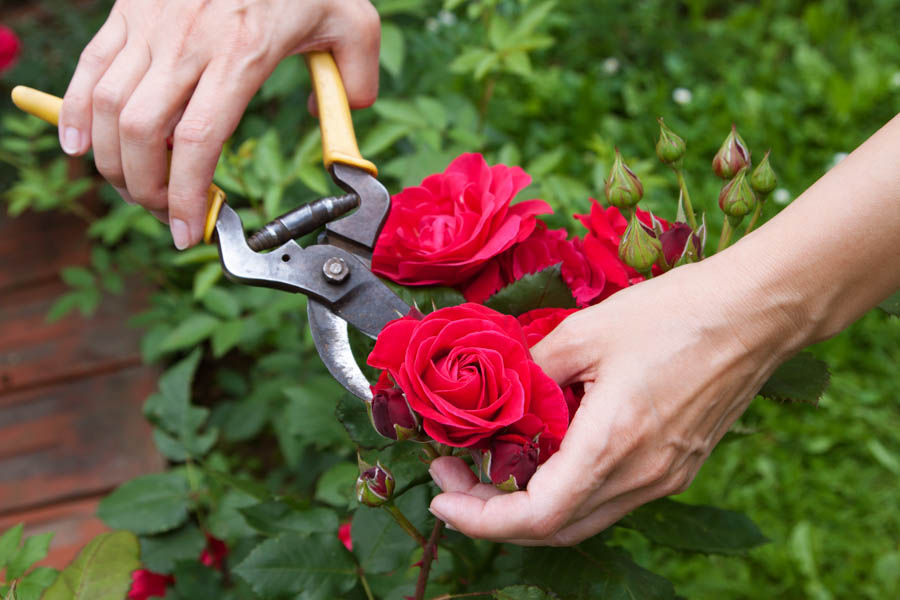A Quick Overview of Rose Pruning Between Blooms

GardenZeus receives commissions for purchases made through the links on this post.
While rose pruning varies by type and species, many roses need two primary kinds of pruning. The first is clean-up and light pruning after blooming. The second type of pruning is a more comprehensive annual pruning. This article focuses on clean-up and light pruning after blooming that should be done regularly throughout the growing season.
Note that these instructions apply to all roses types and species except for two: roses that bloom only once annually, such as many Old Garden Roses; and climbing roses, which must be pruned differently to maintain their unique growth and flowering structure.
The purpose of regular pruning is to remove spent blooms to prevent the rose from putting its energy into producing seeds (and therefore slowing production of the next round of blooms), to clean out any spent or dead canes, and to train minimally as needed for the next round of blooming. But gardeners should also prune throughout the growing season to maintain and encourage desired shape and size.
For optimal performance, many roses should be deadheaded after each bloom flush; that is the spent bud should be removed. Deadheading is particularly important for hybrid tea flowering, as well as many miniatures. Breeders have now developed “self-cleaning” roses that do not need deadheading; that is the plants shed the spent blooms and continue to produce flowers without the help of the gardener. Most older varieties of roses are not “self-cleaning.”
Gardeners should also remove suckers (growths from the rose roots or rootstock), and watersprouts, (vertical stems growing from other stems, including at or below the plant’s graft). Many rose varieties are actually two plants, a rootstock and a scion, that are grafted and grown together as one plant to be sold by nurseries. To preserve the scion with its desirable blooms, all leafing growth from below the graft should be removed regularly or as needed multiple times per year. Suckers and watersprouts are often readily identifiable because stem color, thorn size, growth habit, or other characteristics differ obviously from the desirable blooming wood.
Make cuts at an angle slightly above a bud or node that naturally points in a desirable direction for new growth and blooming, with the cut pointing in the direction of the bud or node. Roses transport nutrients and fluids across stems, so be sure not to cut below the top of any bud or node, as this might inhibit the plant’s ability to produce strong, rapid growth, and might produce new stems that are weakly attached and prone to breakage.
The pruning cut in this picture is close enough to the node (could be slightly closer) but ideally the angle of the cut would be parallel to the new growth rather than crossing it.
Use sharp pruning shears and other tools, which may require sharpening about every 15 minutes to an hour, depending upon how rapidly you cut, the quality of the tool blade, and how well preserved the blade’s bevel has been after prior sharpening. GardenZeus recommends Felco pruners as the tool of choice for rose pruning.
For complete instructions for growing roses in your specific area, go to GardenZeus and enter your zip code, then go to rose.
